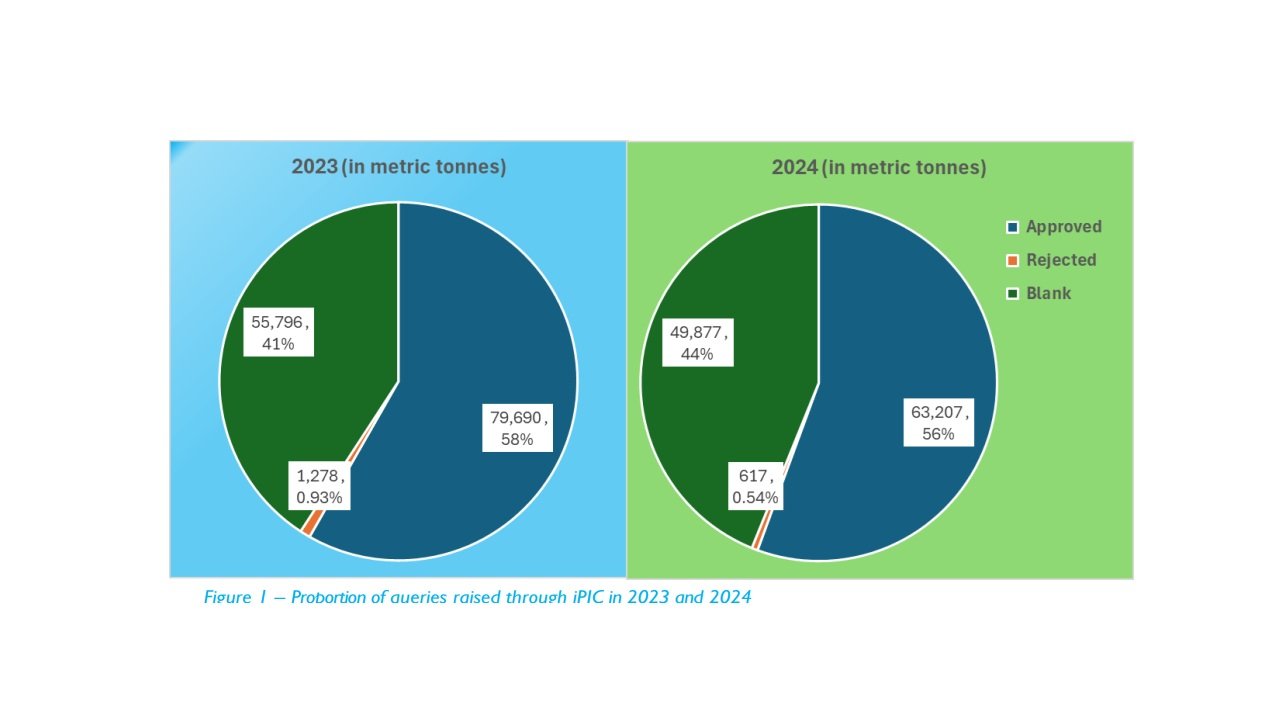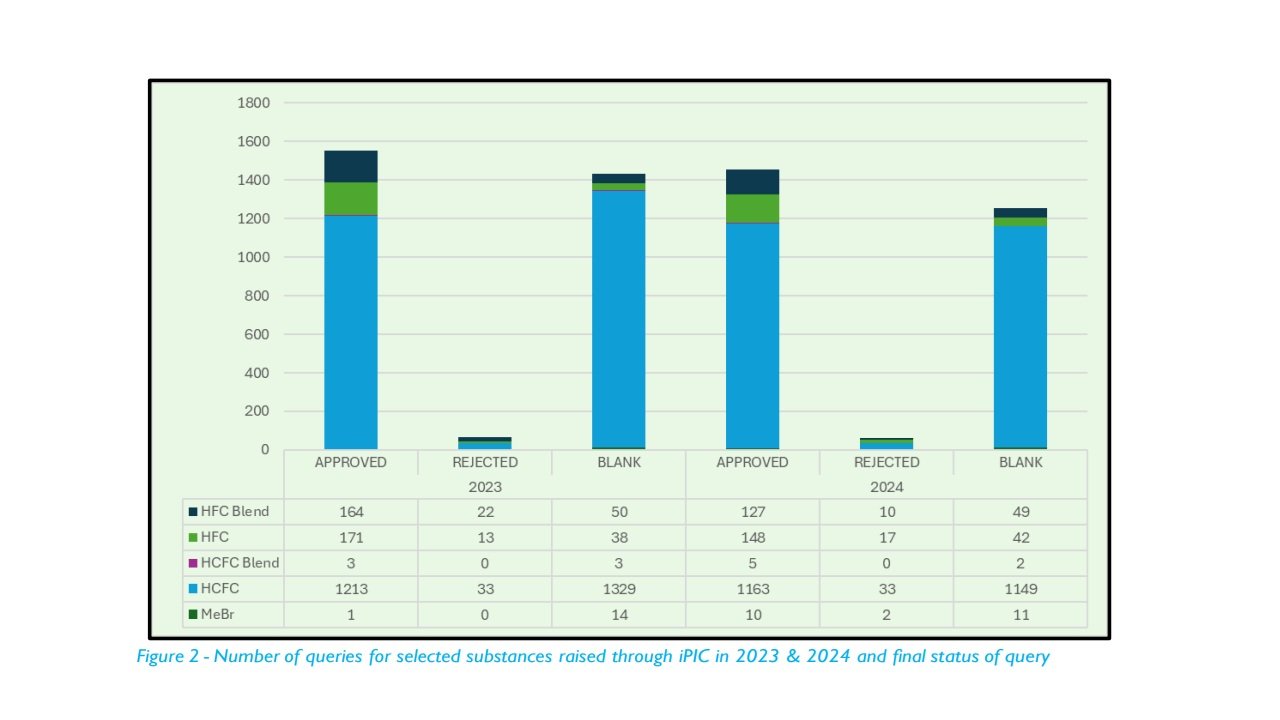iPIC platform reviewed over 250,000 tonnes of controlled substances in 2023–2024
The United Nations Environment Programme (UNEP) has reported that its online iPIC mechanism processed 5,843 trade queries between 2023 and 2024, verifying more than 250,000 metric tonnes of ozone-depleting substances (ODS) and other controlled refrigerants. The mechanism, developed to support compliance with the Montreal Protocol, facilitated legal trade and helped prevent unauthorized shipments of HCFCs, HFCs, CFCs, methyl bromide, and related substances.
Of the substances checked, only 1,895 metric tonnes (less than 1%) were rejected, indicating a relatively low level of potential illegal or unwanted trade during this period. However, 42% of the cases—over 105,000 metric tonnes—received no final status update from the countries involved.
Most iPIC queries involved HCFCs, both in terms of volume and frequency, followed by a growing number of HFC-related shipments. In total, 847 HFC queries were recorded in 2023 and 2024, amounting to 27,143 metric tonnes, which equals roughly 29.6 million tonnes of CO2-equivalent emissions. The highest single shipment verified was 1.3 million kg of HCFC-22.
The mechanism also screened smaller amounts of legacy ODSs such as CFCs and methyl bromide for exempted or feedstock uses. Rejected imports were mostly related to HCFCs, with reasons including license discrepancies, quota violations, and false documentation. These interventions prevented nearly 106 ODP tonnes (1,900 metric tonnes) of such substances from being traded.
Since its digital launch in 2006, iPIC has been used to verify over 450,000 metric tonnes of controlled substances. According to UNEP, over 7,000 metric tonnes of potentially illegal imports have been prevented through the system, equivalent to 11.5 million tonnes of CO₂-equivalent emissions.
“Regular and close communication between iPIC focal points can help prevent unlawful activities and potential illegal trade,” the report states.
The iPIC platform currently includes 112 countries and the European Union. UNEP encourages wider participation and regular updates to country profiles to improve monitoring effectiveness.

